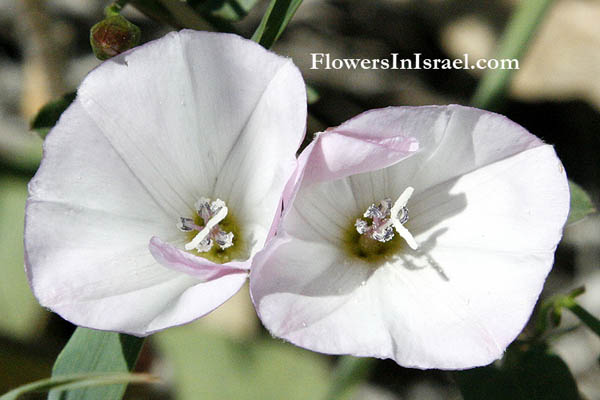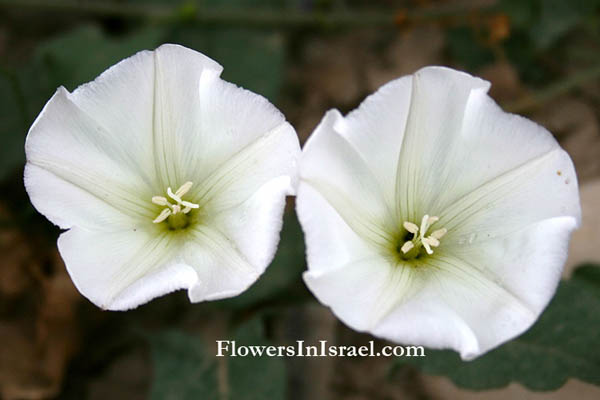Hebrew: חבלבל השדה, Arabic: ضيبأ دادح, Egypt: عَليق "'Olleiq"
| Scientific name: | Convolvulus arvensis L. | |
| Common name: | Corn Bind, Lesser bindweed | |
| Hebrew name: | חבלבל השדה | |
| Arabic name: | ضيبأ دادح | |
| Egypt: | عَليق "'Olleiq" | |
| Plant Family: | Convolvulaceae, חבלבליים |

|
| Life form: | Geophyte | |
| Leaves: | Alternate, entire | |
| Flowers: | Pink, white | |
| Fruits / pods: | Capsule | |
| Flowering Period: | March, April, May, June, July, August, September, October, November | |
| Habitat: | Weed in cultivated land of various crops, ruderal | |
| Distribution: | Mediterranean Woodlands and Shrublands, Semi-steppe shrublands, Shrub-steppes, Deserts and extreme deserts | |
| Chorotype: | Pluriregional, boreal-tropical | |
| Summer shedding: | Ephemeral |

Derivation of the botanical name: Convolvulus, Latin, convolvere, "to twine around"; "a bindweed" (Plinius), from convolvo, volvi, volutum, ere "to droll together, roll up, intertwine." arvensis, arvum, field, cultivated land, plowed land; of cultvated fields. The Hebrew word chavalval, חבלבול. Shaul Tchernichovsky (1875 – 1943), poem: "You Are So Fragrant" (19.7.1929):... ניחוחם של חבלבלים, nichucham shel chavalvalim, fragrance of Convolvulus (Tchernichovsky's Note: chavalval, חבלבול, Convolvulus L. Winde, Bindweed, Вьюнок).
|